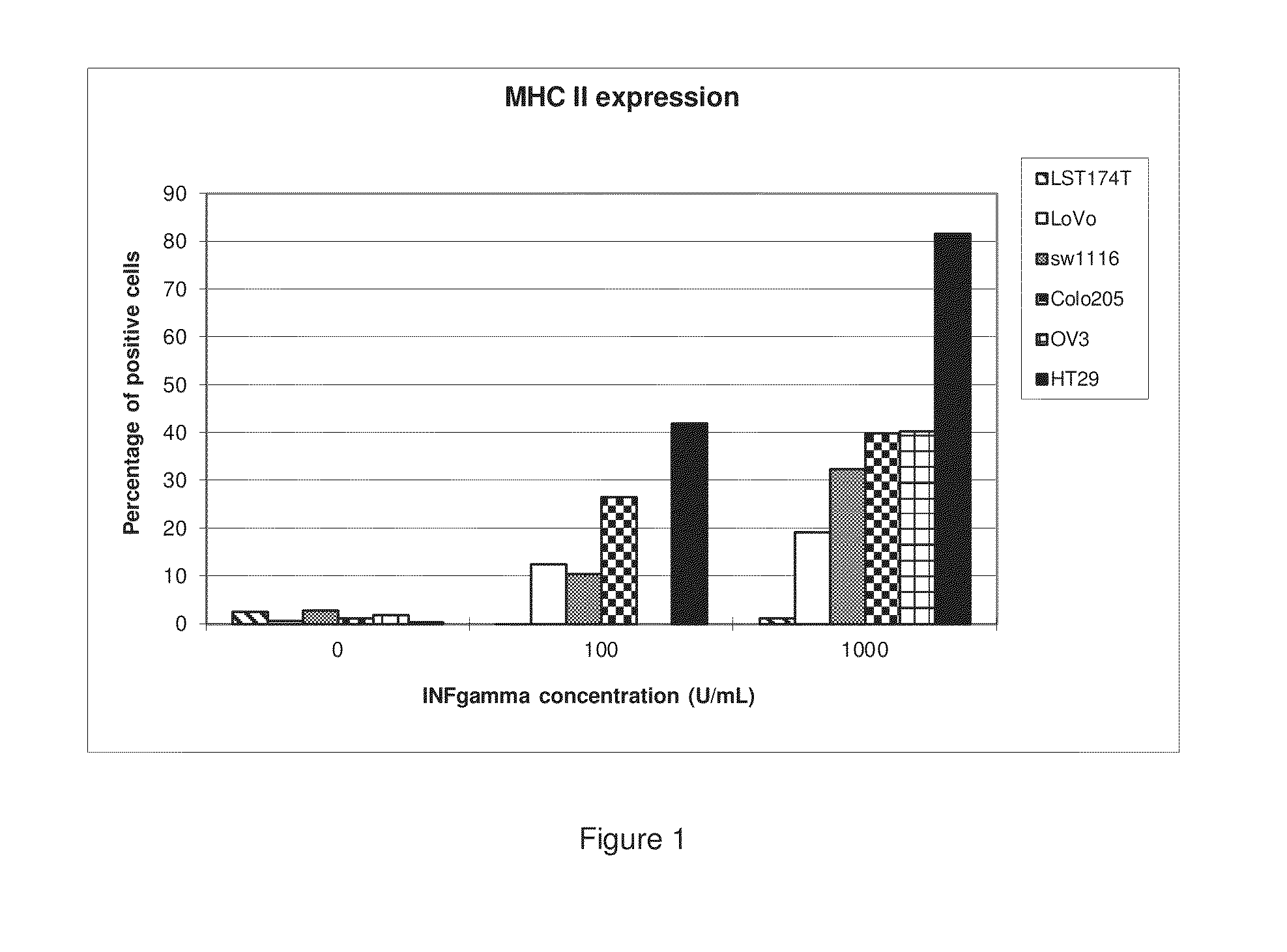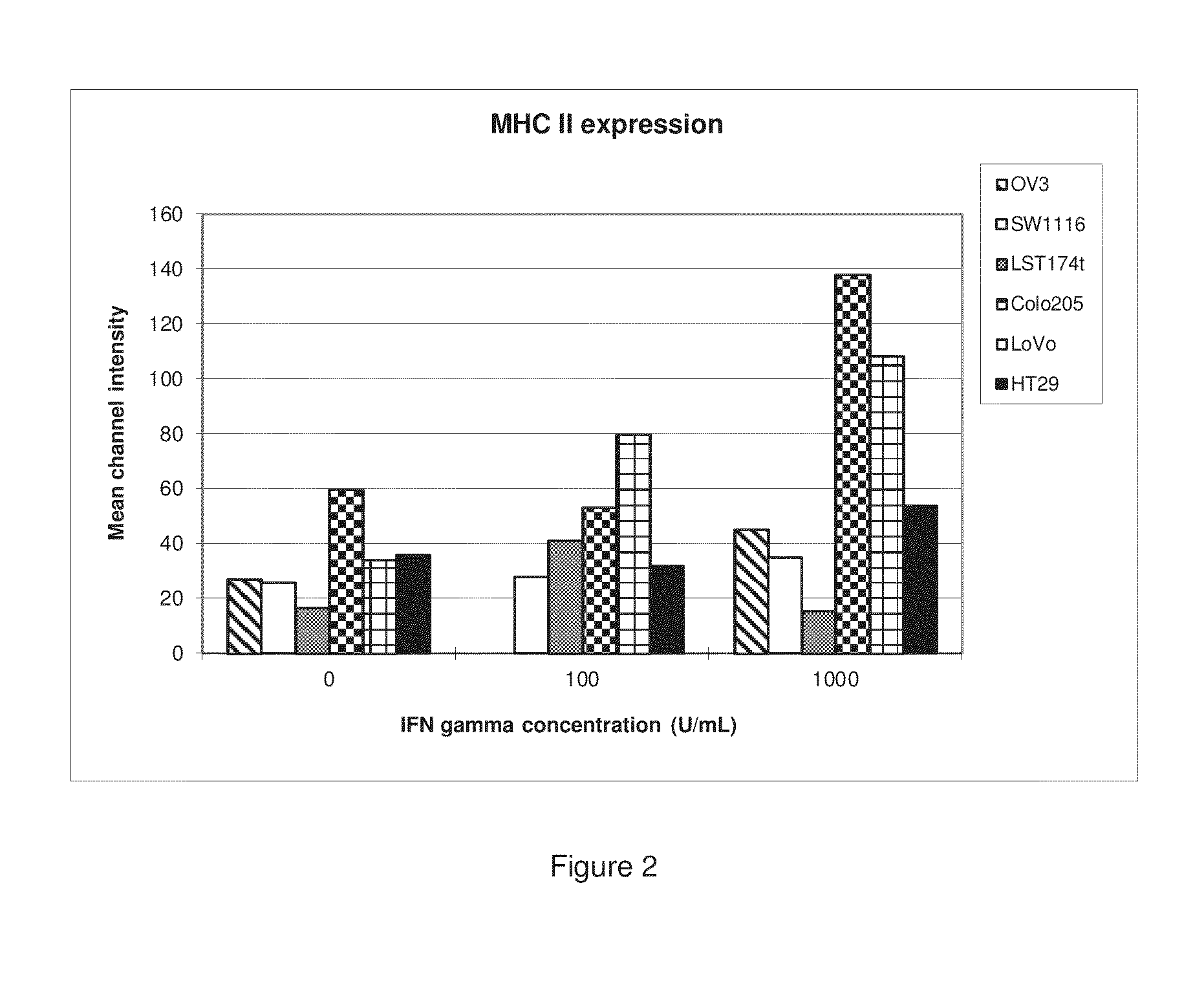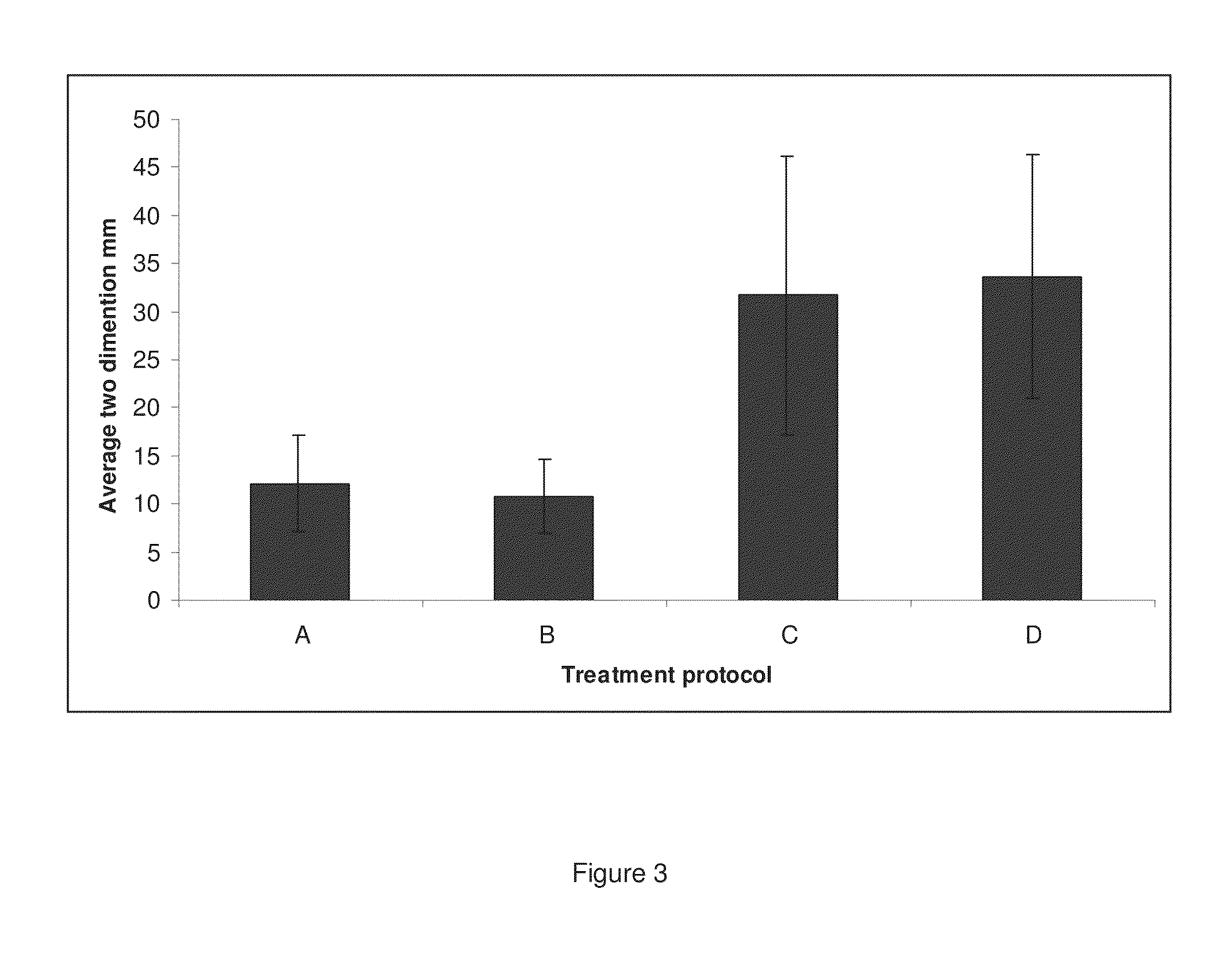Autologous cancer cell vaccine
- Summary
- Abstract
- Description
- Claims
- Application Information
AI Technical Summary
Benefits of technology
Problems solved by technology
Method used
Image
Examples
example 1
[0182]Human LST174T, LoVo, SW1116, Colo205, and HT29 colon cancer cells and human SK-OV-3 ovarian cancer cells were cultivated with varying concentrations of IFN-γ for 72 hours. The cells were then analyzed by flow cytometry using a specific anti-MHCII (DP, DQ and DR) antibody in order to determine whether IFN-γ induced MHCII expression in these cells. The results are shown in Tables 1 and 2 and corresponding FIGS. 1 and 2.
TABLE 1This table lists the percentage of MHCII positivecells following a 72 hour incubation with IFN-γ.IFN-γ(U / mL)LST174TLoVoSW1116Colo205OV3HT2902.700.592.961.35 2.030.351000.2612.4110.5026.59NA41.8710001.3219.1132.5439.9640.4381.60
TABLE 2This table lists the mean channel intensity and relates tothe level of expression of MHCII on MHCII positive cells.IFN-γ(U / mL)LST174TLoVoSW1116Colo205OV3HT29016.734.2925.7159.8927.1435.8710041.4279.8627.8853.28NA31.91100015.68108.4334.91138.2445.3253.76
[0183]This example shows that several different cell types of different orig...
example 2
[0184]Mouse 413-BCR mammary tumour cells were incubated for 48 hours with 100 U / mL IFN-γ and for 24 hours with 50 μg / mL BSA. More specifically, the cells were placed in T25 flasks with 10 ml of medium. The cells were incubated for 48 hours with the medium containing the IFN-γ then were washed with serum-free RPMI 1640 three times. The cells were then incubated with 2 ml of the BSA solution for 2 hours, then complete medium was added, including 100 U / ml IFN-γ and 50 μg / ml BSA. The 413-BCR cells were lehally irradiated and cryopreserved. BALB / c mice were pre-immunized with 3 injections, each containing 1×105 413-BCR cells, administered i.p. with no adjuvant, on days 21, 14, and 7 before challenge. The mice were then challenged with an s.c. injection of 2.5×106 viable 413-BCR cells. All pre-immunized mice failed to develop tumours (n=5), whereas all untreated control mice (n=5) developed tumours after 30 days.
[0185]This example shows that pre-immunizations with cancer cells modified to...
example 3
[0186]20 BALB / c female mice were divided into four groups of five mice each, labeled A, B, C, and D. These mice received two pre-immunizations as set out below in Table 3. Briefly, group A was immunized with cancer cells presenting non-self antigen in the context of MHCII on their cell surface; group B was immunized with cancer cells expressing MHCII on their cell surface without non-self antigen; group C was immunized with non-self antigen; and group D was immunized with PBS. All injections were performed s.c. and included Quil-A as an adjuvant on Day 14 before challenge and no adjuvant on day 7 before challenge. On day 0, 5×105 viable 413-BCR cells were injected s.c.
TABLE 3This table sets out the pre-immunizations that the groups of mice inExample 3 received.TreatmentProcedureA105 413-BCR cells, incubated with 100 U / ml IFN-γ for48 h followed by incubation with 50 ug / ml BSA and 100 U / mlIFN-γ for 24 hours. The cells were lethally irradiated.B105 413-BCR cells, incubated with IFN-γ f...
PUM
| Property | Measurement | Unit |
|---|---|---|
| Fraction | aaaaa | aaaaa |
| Fraction | aaaaa | aaaaa |
| Fraction | aaaaa | aaaaa |
Abstract
Description
Claims
Application Information
 Login to View More
Login to View More - R&D
- Intellectual Property
- Life Sciences
- Materials
- Tech Scout
- Unparalleled Data Quality
- Higher Quality Content
- 60% Fewer Hallucinations
Browse by: Latest US Patents, China's latest patents, Technical Efficacy Thesaurus, Application Domain, Technology Topic, Popular Technical Reports.
© 2025 PatSnap. All rights reserved.Legal|Privacy policy|Modern Slavery Act Transparency Statement|Sitemap|About US| Contact US: help@patsnap.com



